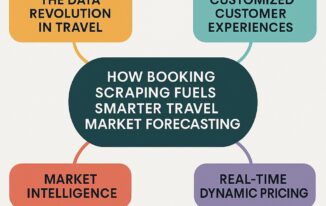The journey of a customer from awareness to the purchase decision is intricate and multifaceted. In the sales process, focusing on those at the bottom of the sales funnel is crucial for success. Understanding how to effectively convert these prospects is vital to boosting revenue and achieving business objectives. Below, we delve into strategies that can help you turn bottom-of-the-funnel prospects into loyal customers.

Understanding the Bottom-of-the-Funnel Audience
Alt text: The word “audience” written in marker to represent the bottom of the funnel audience
The bottom of the funnel (BoFu) stage is a critical point where potential customers are weighing their options before committing to a purchase. These individuals are informed, likely have compared your offerings with those of competitors, and are seeking just a bit more assurance or incentive to close the deal. It’s essential to understand the unique characteristics of this audience in order to address their specific needs and concerns.
To engage this audience effectively, it’s necessary to delve deep into the analytics. Knowing their past behaviors, interactions with your content, and how they arrived at the BoFu stage helps in crafting a more targeted approach. Personalized communication at this juncture, that references their unique journey, can be particularly persuasive.
Creating content targeted specifically at this stage, such as case studies, testimonials, and product demos, can be a deciding factor for BoFu prospects. They require concrete evidence that they’re making the right choice, and evidence-based marketing materials can fulfill this need. Detailed and transparent information will help in building trust and reducing any lingering hesitation they might have.
Crafting Compelling Calls-to-Action for Conversion
The call-to-action (CTA) is crucial for guiding BoFu prospects to the finish line. A compelling CTA is clear, direct, and conveys a sense of urgency. It should be prominently placed and designed to stand out on your webpage, drawing the prospect’s focus and compelling them to take that final step. Language used in CTAs should resonate with the desires and needs of the audience, prompting an immediate response.
Customizing CTAs based on user behavior can significantly amplify conversions. For example, if a prospect has spent considerable time on a particular service page, a CTA related to receiving a quote for that service can be highly effective. In addition, consider varying the CTA based on the source of traffic. Visitors coming from an email campaign may respond better to a different message than those from social media platforms.
The Importance of Trust Signals and Social Proof
Alt text: Sales manager using desktop computer to create a bottom of the funnel marketing strategy
In a digital landscape crowded with options and information, trust is a currency of immense value. Trust signals such as certifications, awards, secure payment badges, and industry affiliations give prospects the confidence that they are dealing with a reputable business. Displaying these trustworthiness indicators prominently can reduce skepticism and foster confidence in the decision-making process.
Social proof like customer reviews, ratings, and testimonials work as powerful endorsements for your products or services. BoFu prospects are seeking validation from peers and third-party opinions. Highlighting positive feedback not only boosts your credibility but also creates a bandwagon effect, encouraging others to join in on the positive experiences shared by current customers.
Including case studies or success stories offers a more in-depth look into customer satisfaction and the tangible benefits of your offerings. These narratives allow prospects to envision themselves achieving similar success, making the potential of purchasing more tangible and desirable. Real-world examples resonate well with those seeking reassurance of product effectiveness and reliability.
User-generated content, such as photos and videos from satisfied customers, can also serve as authentic social proof. Harnessing the voice of your customer base and incorporating it into your marketing strategy humanizes your brand and demonstrates a level of customer satisfaction that can significantly influence BoFu prospects to convert.
Personalization Strategies for Engaging Prospective Customers
The one-size-fits-all approach is a relic of the past. Today’s prospects expect a level of personalization that speaks directly to their needs and interests. Utilizing data-driven insights to create personalized emails, targeted offers, and tailored content can make the difference in how a BoFu prospect perceives the value proposition of your brand.
Dynamically adapting website content to reflect the preferences and previous interactions of a prospect can make them feel understood and valued. Technologies like cookies and AI can help deliver a unique browsing experience that aligns with the individual’s interests, thereby increasing the likelihood of conversion.
Overall, converting bottom-of-the-funnel prospects requires a nuanced understanding of their needs, preferences, and behaviors. By employing targeted calls to action, bolstering trust signals, personalizing the customer experience, and leveraging data effectively, businesses can optimize their conversion strategies to turn interested prospects into dedicated customers.



